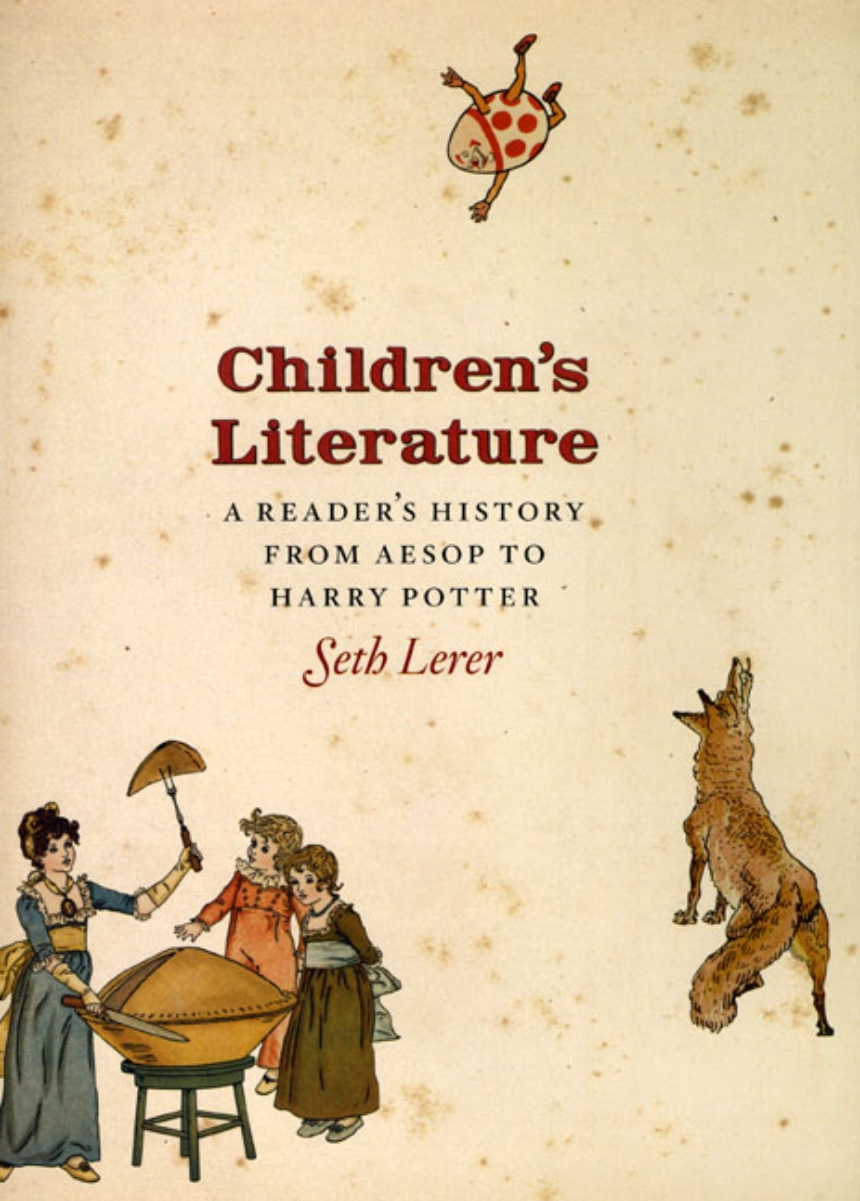Children’s Literature
A Reader’s History, from Aesop to Harry Potter
Children’s Literature
A Reader’s History, from Aesop to Harry Potter
Ever since children have learned to read, there has been children’s literature. Children’s Literature charts the makings of the Western literary imagination from Aesop’s fables to Mother Goose, from Alice’s Adventures in Wonderland to Peter Pan, from Where the Wild Things Are to Harry Potter.
The only single-volume work to capture the rich and diverse history of children’s literature in its full panorama, this extraordinary book reveals why J. R. R. Tolkien, Dr. Seuss, Laura Ingalls Wilder, Beatrix Potter, and many others, despite their divergent styles and subject matter, have all resonated with generations of readers. Children’s Literature is an exhilarating quest across centuries, continents, and genres to discover how, and why, we first fall in love with the written word.
“Lerer has accomplished something magical. Unlike the many handbooks to children’s literature that synopsize, evaluate, or otherwise guide adults in the selection of materials for children, this work presents a true critical history of the genre. . . . Scholarly, erudite, and all but exhaustive, it is also entertaining and accessible. Lerer takes his subject seriously without making it dull.”—Library Journal (starred review)
“Lerer’s history reminds us of the wealth of literature written during the past 2,600 years. . . . With his vast and multidimensional knowledge of literature, he underscores the vital role it plays in forming a child’s imagination. We are made, he suggests, by the books we read.”—San Francisco Chronicle
“There are dazzling chapters on John Locke and Empire, and nonsense, and Darwin, but Lerer’s most interesting chapter focuses on girls’ fiction. . . . A brilliant series of readings.”—Diane Purkiss, Times Literary Supplement
396 pages | 24 halftones | 6 x 9 | © 2008
Guides, Manuals, and Reference: Books on Books
History: General History
Literature and Literary Criticism: American and Canadian Literature, British and Irish Literature, General Criticism and Critical Theory
Reviews
Table of Contents
Introduction Toward a New History of Children’s Literature
Chapter One Speak, Child: Children’s Literature in Classical Antiquity
Chapter Two Ingenuity and Authority: Aesop’s Fables and Their Afterlives
Chapter Three Court, Commerce, and Cloister: The Literatures of Medieval Childhood
Chapter Four From Alphabet to Elegy: The Puritan Impact on Children’s Literature
Chapter Five Playthings of the Mind: John Locke and Children’s Literature
Chapter Six Canoes and Cannibals: Robinson Crusoe and Its Legacies
Chapter Seven From Islands to Empires: Storytelling for a Boy’s World
Chapter Eight On beyond Darwin: From Kingsley to Seuss
Chapter Nine Ill-Tempered and Queer: Sense and Nonsense, from Victorian to Modern
Chapter Ten Straw into Gold: Fairy-Tale Philology
Chapter Eleven Theaters of Girlhood: Domesticity, Desire, and Performance in Female Fiction
Chapter Twelve Pan in the Garden: The Edwardian Turn in Children’s Literature
Chapter Thirteen Good Feeling: Prizes, Libraries, and the Institutions of American Children’s Literature
Chapter Fourteen Keeping Things Straight: Style and the Child
Chapter Fifteen Tap Your Pencil on the Paper: Children’s Literature in an Ironic Age
Epilogue Children’s Literature and the History of the Book
Acknowledgments
Notes
Index
Awards
Choice Magazine: CHOICE Outstanding Academic Title Awards
Won
National Book Critics Circle Board: National Book Critics Circle Award
Won
University of Iowa-Truman Capote Estate: Truman Capote Award for Literary Criticism
Won
